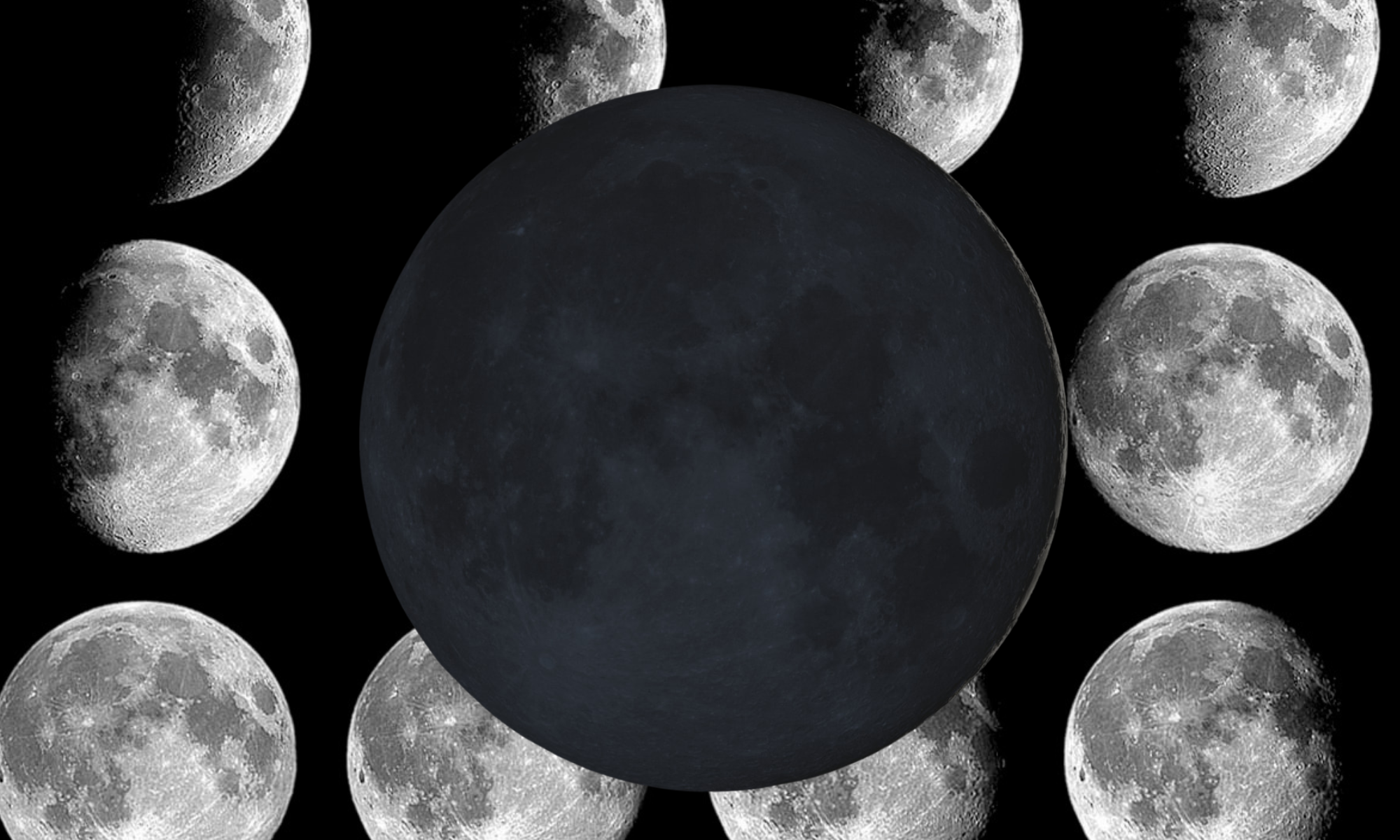Watch the final new moon of 2022 rise on Friday (Dec. 23)
The last new moon of this year marks the start of a lunar cycle that will lead into 2023.

On Friday (Dec 23), the moon will appear completely dark in the sky over Earth during its new moon phase.
Friday’s new moon not only marks the final new moon of 2022 but also the beginning of its last lunar cycle, which will carry over into 2023. This cycle leads up to and past January’s full moon, the Wolf Moon, on Jan. 6, the first full moon of 2023.
During the new moon phase, the moon rises at around the same time as the sun and sets with the sun as well. As a result, the lunar face is lost in the glare of our star.
Related: Earth's moon phases, monthly lunar cycles (infographic)
The 29.5-Earth-day lunar cycle occurs as the moon’s orbit carries it around our planet, creating the phases of the moon. The most notable phases are the new moon, the first quarter moon, the full moon and the last or third quarter moon.
These phases are highlighted by the difference in the fraction of the moon’s surface facing Earth that is illuminated by the sun.
During the new moon, Earth, the moon and the sun are all roughly in a straight line, with the moon sitting between our planet and its star. This means that the side of the moon that is illuminated by the sun is completely turned away from Earth.
Get the Space.com Newsletter
Breaking space news, the latest updates on rocket launches, skywatching events and more!
Moving away from the new moon, light advances across the lunar face, with this progress described as "waxing" by astronomers. By the time of the first quarter, which takes its name from the fact that the moon is one-fourth of the way through its monthly cycle, the face of the moon is half-illuminated.
The waxing of the moon culminates with the full moon, in which the natural satellite is fully illuminated by the sun. During the full moon, Earth, its star and the moon are once again in a line, but this time with our planet in the middle and the moon directly facing the sun.
Following this, the illuminated portion of the moon begins to recede, creeping back across the lunar face in a situation astronomers describe as “waning.” By the time of the third or last quarter moon, the moon’s face is once again half illuminated. This leads to the new moon and the beginning of a new lunar cycle.
The illumination of the moon’s face isn’t the only thing that changes as the moon cycles through its phases, however. Both the time at which the moon sets during the lunar cycle and the length of time it is visible through the night change also.
In the build-up to the Dec. 23 new moon, the moon has been rising and setting an hour later each day. This leads to the moon rising at sunrise and setting at sunset during the new moon.
After the new moon, this time shift continues with the moon visible for longer each night. By the time of the first quarter phase, the moon will rise around noon and will set around midnight. When the next full moon arrives, it rises at sunset and sets at sunrise. This means the fully illuminated moon is visible for most of the night.
The next new moon after Dec. 23 and the first of next year occurs on Saturday (Jan. 21), marking the beginning of the first full lunar cycle in 2023.
Editor’s Note: If you snap a photo of the new moon and would like to share it with Space.com’s readers, send your photo(s), comments, and your name and location to spacephotos@space.com.
Follow us on Twitter @Spacedotcom or on Facebook.
Join our Space Forums to keep talking space on the latest missions, night sky and more! And if you have a news tip, correction or comment, let us know at: community@space.com.

Robert Lea is a science journalist in the U.K. whose articles have been published in Physics World, New Scientist, Astronomy Magazine, All About Space, Newsweek and ZME Science. He also writes about science communication for Elsevier and the European Journal of Physics. Rob holds a bachelor of science degree in physics and astronomy from the U.K.’s Open University. Follow him on Twitter @sciencef1rst.









